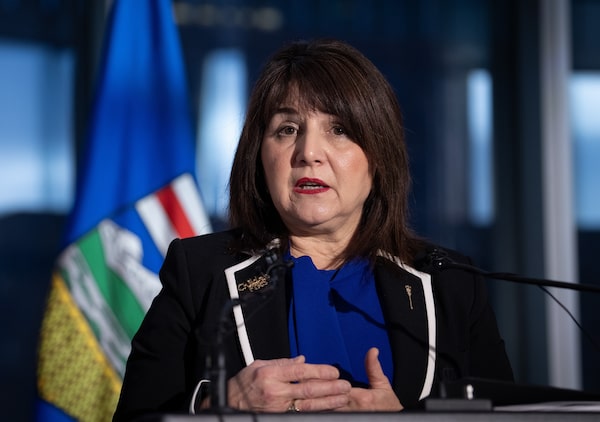
Alberta Health Minister Adriana LaGrange makes a health-care announcement in Calgary on Dec. 21, 2023.Todd Korol/The Canadian Press
Alberta has announced a $15-million program aimed at supporting nurse practitioners to work independently, part of the province’s plan to improve access to primary care.
More than 700,000 Albertans do not have a primary health care provider, according to the province. Health Minister Adriana LaGrange told a news conference Thursday that the government estimates 50 nurse practitioners will participate in the new program this year, eventually supporting a minimum of 45,000 patients, which she said will go “a long way” to address the current shortage.
Ms. LaGrange said nurse practitioners eligible for the program will need to care for at least 900 patients, accept walk-ins and operate during evenings, weekends and holidays. Nurse practitioners can work independently in their own practice or in an existing primary-care clinic.
The provincial program will provide a one-time incentive of $75 per patient after reaching the 900 mark and $10,000 in one-time mentorship funding to clinics, communities and primary care networks that partner with nurse practitioners who are entering the practice.
Under the program, nurse practitioners will make about 80 per cent of what family doctors are paid. Alberta is currently developing a new model for compensating physicians, and it is unclear which model the 80 per cent involves.
Provinces and territories are looking at alternative ways to bolster access to primary care because of Canada’s shortage of family physicians. For Alberta Premier Danielle Smith, expanding the role of nurse practitioners is part of the solution.
“We know that too many Albertans do not have access to a primary-care practitioner and often when they are able to find a health care provider, they still need to wait weeks to get an appointment. That’s just unacceptable,” Ms. Smith said.
“Nurse practitioners are a welcome and integral part of the solution to primary care access. They are qualified health care professionals whose education and training allow them to function as primary care providers and offer many of the same services as doctors.”
Alberta Medical Association president Paul Parks said the “devil will be in the details.” He said the program could be “very positive” if it fosters collaboration between nurse practitioners and family-medicine physicians, but on the flip side, worrying if it drives nurse practitioners to work independently from family doctors.
“If it plays out that nurse practitioners go work independently, totally siloed and on their own, we already know from many other jurisdictions, many other studies, that they’ll test more, they’ll consult more, they’ll use more resources, they’ll see less patients,” he said. “All those factors, if done in a competitive, noncollaborative way, won’t benefit Albertans the way we need it to.”
He added that nurse practitioners going at it alone with 80 per cent of compensation compared with doctors would have a hard time staying afloat, pointing to the many physicians currently struggling to keep their clinics open.
Jennifer Mador, president of the Nurse Practitioner Association of Alberta, welcomed the new program and said it will remove obstacles. “There will be some growing pains, but I’m excited for the potential this model provides,” she said.
Last month, Ontario announced $110-million to expand team-based care, which included investment into five new and expanded clinics led by nurse practitioners. Ontario’s Health Minister Sylvia Jones said, however, a loophole in the Canada Health Act could undermine this investment because it had led to a “disturbing rise” in clinics charging patients for primary care.
In a letter sent to federal Health Minister Mark Holland, Ms. Jones said the health act does not outline what is permissible for non-physicians, such as nurse practitioners, to charge patients for care.
“To this extent, I am asking for your department and your government [to] consult and work with provinces and territories on a Canada-wide solution to close this loophole, to guard against unintended consequences, and prohibit nonphysicians from charging for publicly funded services,” Ms. Jones wrote.
In response to the letter, Christopher Aoun, press secretary to Mr. Holland, said Ottawa is working on its own letter, with input from provinces and territories, to clarify the application of the act, including in relation to expanding scopes of practice for nurse practitioners.
In 2018, B.C. began creating positions for nurse practitioners to support primary-care patients as part of its team-based care system. There were 590 nurse practitioners working in the field as of last December, an increase of 60 since December, 2022.